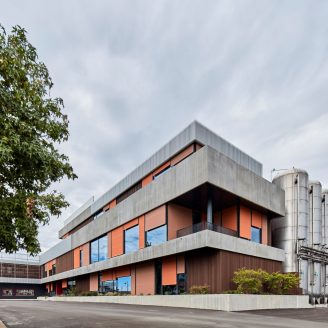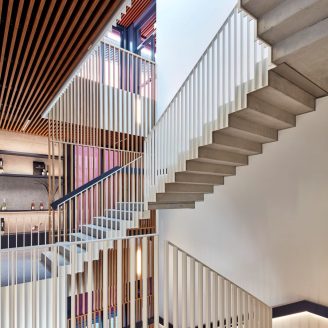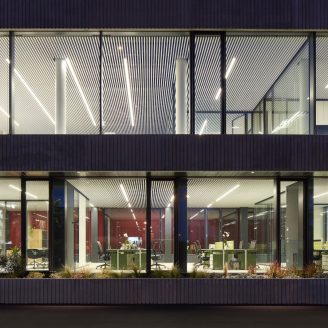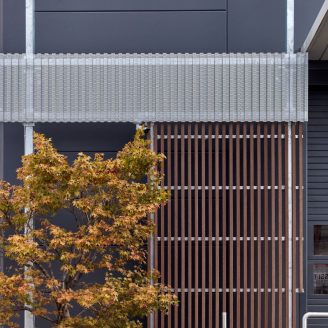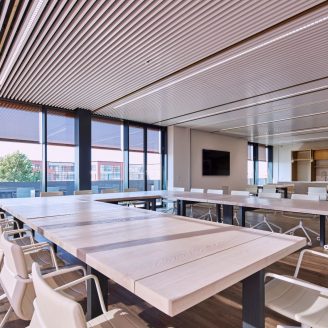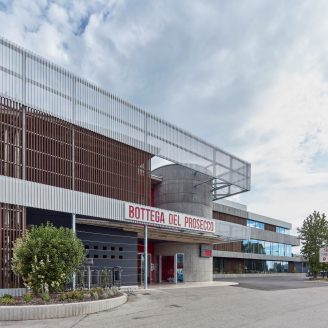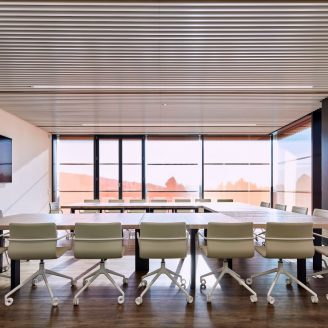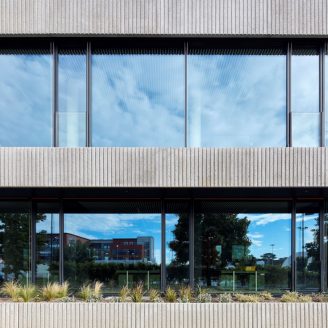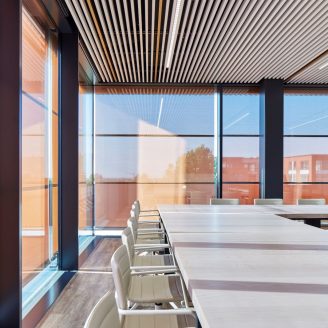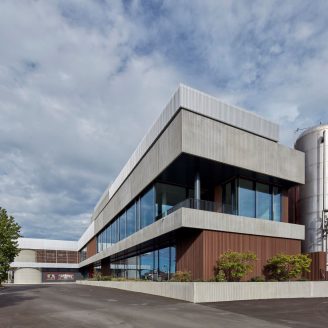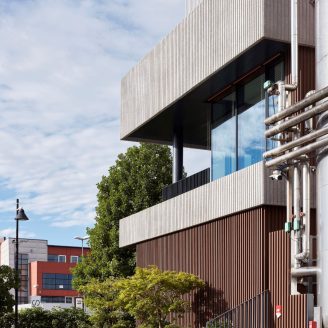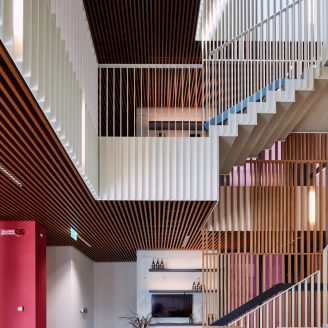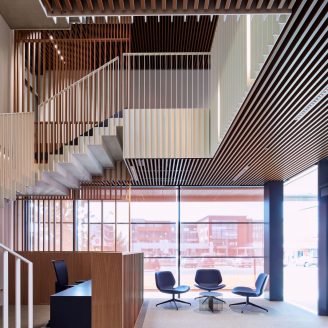In the province of Treviso (Italy), located in a manufacturing and commercial area characterized by low-quality buildings, the recently completed headquarters for the Cantina Montelliana are characterised by an elegant, composite design that extends to include other preexisting buildings.
The headquarters of the wine cooperative have been designed by michielizanatta.net architetti, the studio led by Tommaso Michieli and Christian Zanatta, and is covering an area of about 10,000 square meters. This new facility allows the company to have a structure of a size congruent with its current workforce of sixty employees.
Placed at the very front of the production areas, the block housing the headquarters of Cantina Montelliana has a rectangular floor plan, about 50 meters long and 10 meters wide, with three above-ground floors and one basement, totaling about 1,800 square meters.
It accommodates technical and commercial offices, a meeting room, a tasting area, the boardroom, the executive office, and a terrace for events.
Its facade, which extends on the south side parallel to Schiavonesca Road, is organized in bands of different heights and with varying overhangs. Here, pre-formed concrete and perforated corrugated sheet metal surfaces alternate with extensive ribbon windows, frequently interspersed with wooden screens.
All concrete, sheet metal and wooden elements repeat a pattern of dense vertical grooves that offers a kind of counterpoint to the distinct horizontality of the overall composition. Assorted and promiscuously distributed, these elements yield a lively and coherent design, in which roll-up curtains of different widths and in two shades of orange partake, the two shades obtained by thearchitects by occasionally flipping the side of the curtain intended for the interior to the outside.
The intricate system of openings and screens also lends quality to the interior spaces, which strongly relate both to the outdoors, on the fronts facing south and east, and to the production areas located at the rear of the building, to the north.
On the main façade, a spacious entrance is created with a recess in the ground floor, highlighted by a bright red septum that leads toward a grand staircase that serves the four levels. Wood counter ceilings echo the striped pattern found in the facade elements and serve a soundabsorbing function.
Behind the headquarters building, the color red reappears to mark the preexisting building dedicated to wine storage and distinguish it from the addition. The two objects are physically separated but the space in between, which affords unexpected glimpses, is a place of connection and transition. It expresses the choice to hold even very different architectural elements together, putting them in dialogue.
Such a choice is at the origin of the extension of the facade of the headquarters to engage the other adjacent, pre-existing buildings: a commercial outlet store and a warehouse.
A galvanized iron frame supports a counter façade that is placed in front of the existing buildings, defining the framework on which the continuing horizontal band pattern is arranged.
However, it is a façade that reveals its content, both through transparency effects achieved by the metal and wooden screens and by the fact that it occasionally retracts, leaving portions of the pre-existing buildings fully visible.
In conclusion, the Cantina Montelliana project was conceived as a fragment in a territory that incorporates the formal inconsistency of the industrial landscape to provide a new identity and to reorganize the spaces of the entire compound. Different materials are placed side by side and dialogue and the entire intervention is open for future additions and further development.













